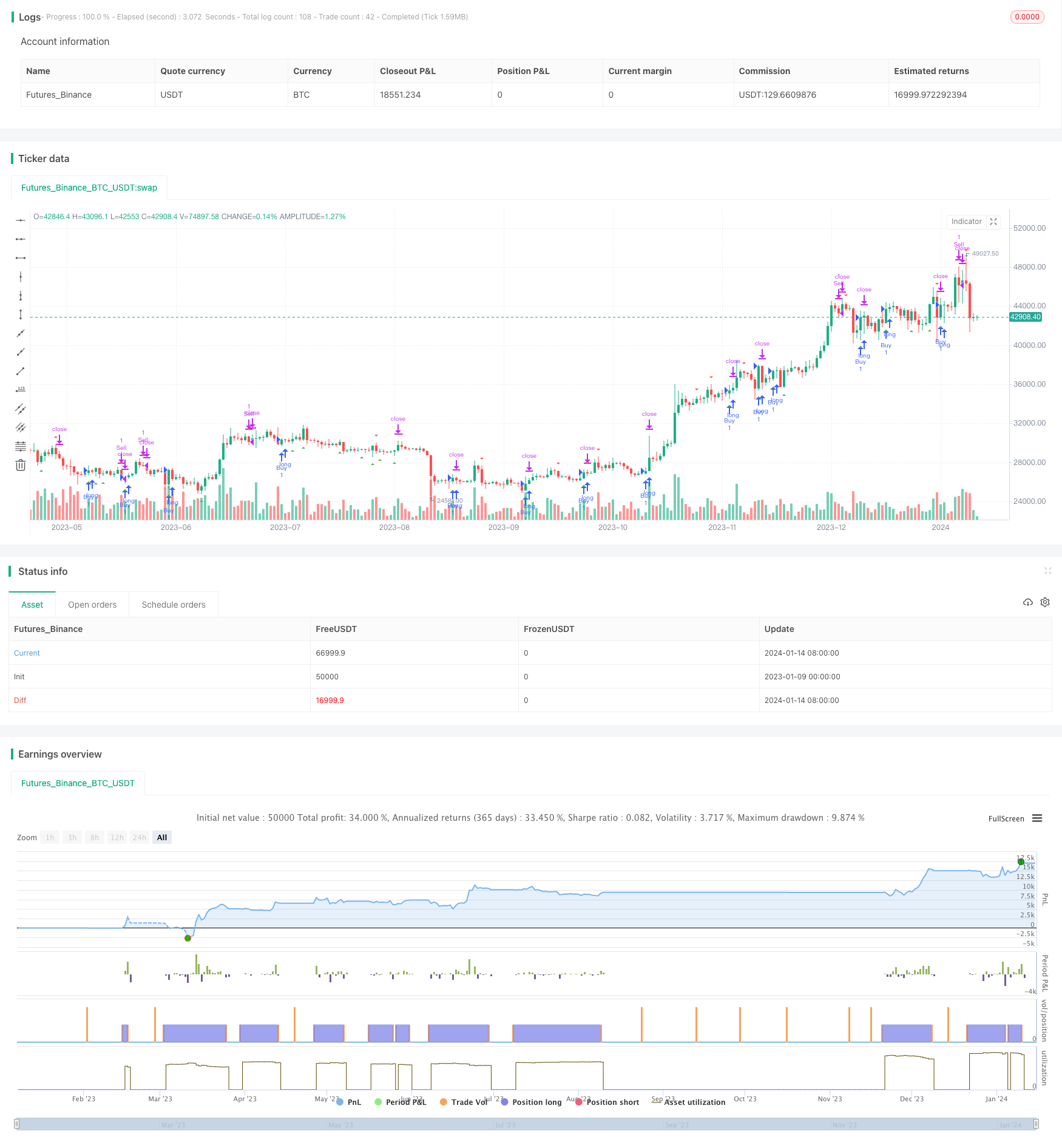
概述
该策略通过组合使用移动平均线和随机相对强弱指数(Stochastic RSI)来寻找交易机会。具体来说,它会同时看涨趋势的中短期移动平均线,和超买超卖的随机RSI指标,在二者发出买入和卖出信号时进行操作。这种组合使用可以过滤掉一些假信号,提高策略的稳定性。
策略原理
该策略主要由以下几部分组成:
计算两条不同周期的移动平均线MA1和MA2。
计算随机相对强弱指数Stochastic RSI。该指标结合RSI和随机指标的原理,可以显示RSI指标是否处于超买或超卖状态。
在随机RSI指标从超卖区上穿定阈值时产生买入信号;而从超买区下穿时产生卖出信号。
当随机RSI指标发出信号,并且短周期移动平均线处于长周期移动平均之上时,进行买入。这可以过滤掉大部分假信号。
计算风险金额和仓位。固定的风险金额可以有效控制单笔损失。
设置止损和止盈价格。跟踪止盈,让利润最大化。
优势分析
这种组合使用移动平均线和随机RSI指标的策略,有以下几个优势:
可以在趋势行情中获得较好回报。中长线均线组合可以判断主要趋势方向。
随机RSI指标可以有效判断超买超卖现象,这对于捕捉反转机会很有用。
组合使用过滤虚假信号的可能性,可以提高稳定性。
采用风险金额法进行资金管理,可以限制单笔亏损,避免超出可承受范围。
设置止损止盈以锁定利润,避免风险。
风险分析
该策略也存在一些风险,主要集中在以下几个方面:
在震荡趋势中,中长线均线可能发出错误信号。需要设置止损来控制风险。
随机RSI指标容易受剧烈价格变动影响,可能也会发出错误信号。与均线组合使用可以缓解。
风险金额法无法完全规避大额亏损的可能。需要合理设置仓位。
在行情剧烈变动时,无法获取合理价格设置止盈止损。这时要及时人工干预。
优化方向
该策略可以从以下几个方向进行进一步优化:
测试更多参数组合,寻找最佳的参数周期。现在使用的周期并不一定是最优。
尝试其他指标与移动平均线进行组合。例如KDJ,MACD等。选取最匹配的指标。
对交易品种进行测试优化。现在是针对外汇进行测试,可以尝试在其他市场应用。
采用机器学习等方法动态优化参数。现在参数是静态设置的,这可能无法适应市场变化。
总结
移动平均线与随机RSI组合策略,通过均线判断大趋势,随机RSI判断反转点,二者结合形成交易信号,并设置止盈止损与风险控制,从而获得了稳定的策略逻辑。这种组合策略结构简单实用,值得进一步测试和优化,可以延展至更多品种和参数设置上。
/*backtest
start: 2023-01-09 00:00:00
end: 2024-01-15 00:00:00
period: 1d
basePeriod: 1h
exchanges: [{"eid":"Futures_Binance","currency":"BTC_USDT"}]
*/
//@version=5
strategy("Moving Average and Stochastic RSI Strategy", shorttitle="MA+Stoch RSI", overlay=true)
// Input variables
ma1_length = input.int(20, title="MA1 Length")
ma2_length = input.int(50, title="MA2 Length")
stoch_length = input.int(14, title="Stochastic RSI Length")
overbought = input.int(80, title="Overbought Level")
oversold = input.int(20, title="Oversold Level")
risk_percentage = input.float(2.0, title="Risk Percentage")
// Calculate moving averages
ma1 = ta.sma(close, ma1_length)
ma2 = ta.sma(close, ma2_length)
// Calculate Stochastic RSI
rsi1 = ta.rsi(close, stoch_length)
rsiH = ta.highest(rsi1, stoch_length)
rsiL = ta.lowest(rsi1, stoch_length)
stoch = (rsi1 - rsiL) / (rsiH - rsiL) * 100
// Determine buy and sell signals based on Stochastic RSI
buySignal = ta.crossover(stoch, oversold)
sellSignal = ta.crossunder(stoch, overbought)
// Plot signals on the chart
plotshape(buySignal, style=shape.triangleup, location=location.belowbar, color=color.green, size=size.small)
plotshape(sellSignal, style=shape.triangledown, location=location.abovebar, color=color.red, size=size.small)
// Calculate position size based on equity and risk percentage
equity = strategy.equity
riskAmount = equity * risk_percentage / 100
positionSize = riskAmount / ta.atr(14)
// Entry and exit conditions
var float stopLoss = na
var float takeProfit = na
if buySignal
stopLoss := low
takeProfit := high
strategy.entry("Buy", strategy.long)
else if sellSignal
strategy.exit("Sell", from_entry="Buy", stop=stopLoss, limit=takeProfit)